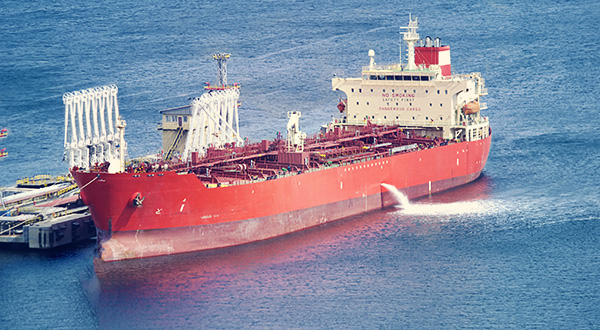The International Chamber of Shipping (ICS) notes Finland’s significant announcement that it has acceded to the IMO Ballast Water Management Convention. This suggests that this new regime, to protect local ecosystems from the impacts of invasive species, will enter into force worldwide during September 2017.
ICS therefore reiterates that it is now more vital than ever that IMO Member States finalise the revision of the G8 Type Approval Guidelines for treatment systems at the next session of the IMO Marine Environment Protection Committee this October.
ICS Chairman, Esben Poulsson said:
“We must ensure that shipowners can have absolute confidence that the expensive equipment they will soon have to install will be effective in treating ballast water conditions normally encountered during worldwide operations and be regarded as fully compliant during Port State Control inspections.
“The fixing of a definite implementation date, after so many years of delay, will at least give shipowners some of the certainty needed to make important decisions about whether to refit the new mandatory treatment equipment or otherwise to start sending ships for early recycling” Mr Poulsson added. “Unfortunately, the entry into force of the new IMO regime will not resolve the extreme difficulties that still exist in the United States.”
ICS says there is still great uncertainty with respect to the more stringent United States approval regime for treatment equipment, which started to be enforced in January 2014 (the U.S. not being a Party to the IMO Convention).
The U.S. regulations require all ships that discharge ballast water in U.S. waters to use a treatment system approved by the U.S. Coast Guard. However, because no systems have yet been approved, ships already required to comply with the U.S. regulations have either been granted extensions to the dates for fitting the required treatment systems or else permitted to install a USCG accepted Alternate Management System (AMS), in practice a system type-approved in accordance with the current IMO Guidelines.
However, an AMS will only be accepted for operation for five years, after which time a fully USCG approved system must be installed. But the USCG does not guarantee that an AMS will be subsequently granted full approval. Hence shipowners that may have installed an AMS in good faith, at a cost of between US $1-5 million per ship, might then have to replace the system completely after only 5 years.
“The impasse in the U.S. is a particular concern for operators that have installed ultra-violet systems” observed Mr Poulsson.
ICS says that the situation has been compounded by the Coast Guard announcing, at the end of last year, that it will not accept the methodology used by other IMO Member States to approve UV treatment systems when assessing the number of viable organisms in treated ballast water.
“ICS will therefore be working with IMO Member States to impress upon the United States the importance of coming to a pragmatic solution. Otherwise, once the IMO Convention finally enters into force next year, the shipping industry will be faced with real chaos.” said Mr Poulsson.
Source & Image credit: ICS




























































